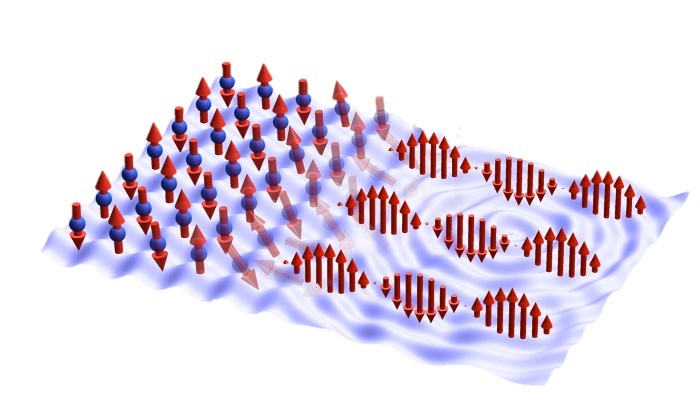11 August 2017
This year, as many as two Leiden physicists have earned a prestigious ERC Starting Grant. With a budget of 1.5 million euro, this is one of the largest individual grants for scientists.
Micro particles
Daniela Kraft receives her ERC grant for research on the behavior of so-called colloids—particles of a millionth of a meter. They find themselves on the battlefield of the micro world, where a continuous storm rages of chaotically dancing molecules. Kraft uses this ceaseless motion to her advantage by letting colloids form structures by themselves. During earlier research, she managed to generate a number of basic structures and to have multiple colloids shift and rotate as joints.
Now she wants to take it one step further and build larger flexible systems from those building blocks. Up until now, larger structures were always rigid—problematic if you want to build things like micro robots. The ERC grant gives her plenty of space for this; she can appoint two PhD students and a postdoc. And there are indeed more than enough open questions, says Kraft. ‘We want to know the impact of a slightly different buildup of a system, for example with cubes instead of spheres. And we want control over switching back and forth between various structures. For example by using magnetic or active particles.’
The ultimate goal on the horizon is to have micro robots that build themselves up. ‘On the macro scale there are already robots’, says Kraft. ‘And just last year the Nobel Prize was awarded for molecular robots. But in between there is nothing. We want to fill that gap.’
Quantum materials
Milan Allan receives his ERC grant for research on quantum materials. These show mysterious quantum mechanical effects on a macroscopic scale. Their electrons often behave in a collective way, similar to a swarm of birds, but guided by the magic of quantum mechanics. Still, we know very little about them. Understanding quantum materials is one of the holy grails in physics, and could have major technological advantages. For example in the past, the quantum mechanical properties of silicon have led to the computing revolution after we started to understand them.
Allan scrutinizes quantum materials by looking at the ‘melting’ of electrons with an STM microscope. Physicists consider electrons in a material as an electronic liquid that can be frozen or molten. If molten, the liquid conducts electricity, but if it’s frozen, it will block any currents. Certain materials have both frozen and molten parts in their electronic liquid. This interplay between molten and frozen is thought to define the exotic properties of quantum materials, including the property to conduct electricity without resistance, which would benefit society tremendously.
With his ERC grant, Allan has the opportunity to build exactly the machinery needed to look at quantum materials one electron at the time. He will also use the money to hire two PhD students and two postdocs.















